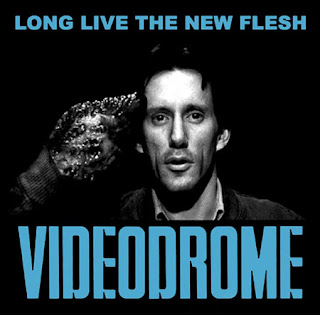
Genetic engineering and manipulating living organisms is officially a part of pop culture, albeit still a very incipient trend. That this happened so fast is very interesting, and that pop culture is so fascinated with these new possibilities is also noteworthy. Below is Wired's list of top 10 organisms that didn't exist last year, something that, had I read it 2 years ago, might have seemed completely impossible. As such techniques become more and more part of a broader audience's lexicon of possible forms of expression, it is interesting to follow what will become of them. Not only in terms of what new organisms we choose to develop, or what manipulations become more or less popular and why, but how the total landscape of life will be inexorably changed by this.
[See the original piece at http://www.wired.com/science/discoveries/news/2007/12/YE_10_organisms#]
1. Ashera GD hypoallergenic cat
Lifestyle Pets has created a cat it calls the Ashera GD, which has been genetically engineered to be hypoallergenic. The high-tech blend of exotic cat varieties doesn't come cheap: This kitty in the window retails for $27,000 -- nothing to sneeze at. The ultra-rich around the world, however, don't mind the price tag. Six of the cats sold in December, three of them in the company's best market: Russia. Next year, expect a transgenic cat, which will remain kitten-size throughout its life.
2. Butanol-producing E. coli
Genetic engineering is getting so easy, even a kid can do it. A team of students from the University of Alberta, "the Butanerds," competed in the International Genetically Engineered Machines competition, creating an E. coli strain that produces butanol fuel (albeit rather inefficiently). The Butanerds have competition from a host of well-funded startups, like Synthetic Genomics and LS9, which are trying to genetically modify single-celled organisms to create the fuels of the future.
3. Artful fluorescent tadpoles
At an Ohio State art show earlier this year, Russian artist Dmitry Bulatov presented his genetically engineered tadpoles, which glow red and green. Bulatov, the curator of the Kaliningrad Branch of the National Centre for Contemporary Art in Russia, is one of a handful of artists around the world using biotechnology to create art. The field is controversial, because it involves experimenting with living things without a medical or therapeutic purpose. Bulatov edited a collection of essays on these issues called Biomediale: Contemporary Society and Genomic Culture.
4. Insulin-producing lettuce
In July, a University of Central Florida researcher announced he had genetically modified lettuce heads that produce insulin. They could be transformed into time-release capsules for people with diabetes, to help them maintain blood-sugar levels without regular injections.
5. Super CO2-absorbing trees
With global warming all over the news in 2007, many schemes have been proposed for taking greenhouse gases out of the atmosphere. Trees already do the world an admirable service sequestering carbon dioxide, but scientists at the Oak Ridge National Laboratory in Tennessee are also genetically modifying poplar trees to increase the amount of carbon that the trees can store.
6. Rapid vaccine-making button mushrooms
In November, Darpa-funded Pennsylvania State University researchers unveiled a new method for rapidly producing vaccines: genetically engineered button mushrooms. Pharming, using plants as chemical factories, is beginning to catch on as a cheap way to synthesize drugs. Within a few years, the Penn State scientists say their 'shrooms will be able to make 3 million doses of vaccine in 12 weeks. Rapid-response vaccine-making could come in handy in case of a bioterror attack or bird-flu outbreak.
7. Glow-in-the-dark cats
Photographs of cats genetically engineered by South Korean scientists to glow red when exposed to UV light made headlines around the world. What most news stories didn't mention was the scientific potential for fluorescent creatures: The animals' glow acts as a "green light" that lets scientists know that their genetic transformations of other, non-glowing genes have worked.
8. Cancer-fighting Clostridium bacteria
Surgery, chemotherapy and radiation treatment mean that a cancer diagnosis is no longer always a death sentence. But certain oxygen-starved parts of tumors are still difficult to reach with the old methods. Enter the Clostridium family of bacteria. Injected into the body, they grow and multiply only in the oxygen-poor parts of cancer tumors. In September, scientists in the Netherlands showed they could arm Clostridium bacteria with therapeutic protein genes, essentially creating search-and-destroy tumor missiles.
9. Schizophrenic mice
July's news that Johns Hopkins researchers had created schizophrenic mice was a surprise, even to scientists who regularly create genetically altered mice to model human diseases. In recent years, we've seen very big mice, fearless mice, Rain Man mice and a host of others. But the schizophrenic experience of hallucinations, delusions of grandeur and paranoia seemed somehow distinctly human. However, scientists recently identified a single gene called DISC1 as a major schizophrenia risk factor, leading to the creation of these mice, which lack the gene. Anatomical examinations revealed similarities between the mice's brains and those of human patients. The mice also revealed behaviors -- trouble finding food, agitation in open fields -- that researchers say parallel human schizophrenic activities.
10. Yeast with poison-sensing rat genes
Temple University doctors announced in May that they'd genetically modified a strain of yeast to glow green in the presence of DNT, an ingredient in dynamite. The scientists used rat olfactory genes to sense the chemical and switch on fluorescent-protein producing genes. Biosensors might be better than man-made sensors for applications like detecting nerve gas, because they are cheap to produce.





